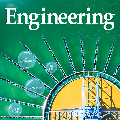Many real-world optimization problems such as engineering design can be eventually modeled as the corresponding multiobjective optimization problems (MOPs) which must be solved to obtain approximate Pareto optimal fronts. Multiobjective evolutionary algorithm based on decomposition (MOEA/D) has been regarded as a very promising approach for solving MOPs. Recent studies have shown that MOEA/D with uniform weight vectors is well-suited to MOPs with regular Pareto optimal fronts, but its performance in terms of diversity deteriorates on MOPs with irregular Pareto optimal fronts such as highly nonlinear and convex. In this way, the solution set obtained by the algorithm can not provide more reasonable choices for decision makers. In order to efficiently overcome this drawback, in this paper, we propose an improved MOEA/D algorithm by virtue of the well-known Pascoletti-Serafini scalarization method and a new strategy of multi-reference points. Specifically, this strategy consists of the setting and adaptation of reference points generated by the techniques of equidistant partition and projection. For performance assessment, the proposed algorithm is compared with existing four state-of-the-art multiobjective evolutionary algorithms on both benchmark test problems with various types of Pareto optimal fronts and two real-world MOPs including the hatch cover design and the rocket injector design in engineering optimization. According to the experimental results, the proposed algorithm exhibits better diversity performance than that of the other compared algorithms.
翻译:许多现实世界优化问题,例如工程设计,最终可以模拟成相应的多目标优化问题(MOP),这些问题必须解决,才能获得近似Pareto最佳战线。基于分解(MOEA/D)的多目标进化算法被认为是解决MOPs的一个非常有希望的方法。最近的研究显示,具有统一重量矢量的MOEA/D完全适合具有常规Pareto最佳战线的OPs,但其多样性方面的表现在MOPs上出现恶化,因为Pareto最佳战线,如高度非线性化和锥形化。这样,算法所设定的解决方案无法为决策者提供更合理的选择。为了有效地克服这一倒退,我们在本文件中提出改进MOA/D算法,其依据是众所周知的Pascolortetti-Serafini 缩放法和新的多参照点战略。具体地说,这一战略包括确定和调整由高度不精确的离析和投影化技术产生的参考点。在业绩评估中,拟议的算法与目前4个正统的试算性、试算式结构中,包括最佳的、最佳试算式的两种试算方法,以及最佳的、最佳的试算方法,比现有4级的试算方法,包括最佳的试算方法,以及最佳的试算方法,以及最佳的试算方法。


